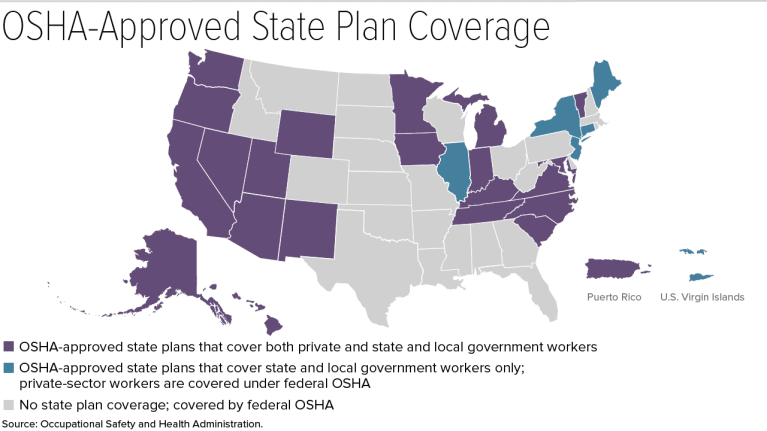
Sometimes the law is on your side in cases of employment discrimination. And sometimes it isn’t.
If you are a woman, person of color, older or disabled, chances are high that if you fought the law, the law won.
The bombshell release last week of allegations against Hollywood mogul Harvey Weinstein for decades of sexual harassment and discrimination against women resulted in his being fired from his position as co-chair of the Weinstein Company. The fallout was decisive.
“It is essential to our Company’s culture that all women who work for it or have any dealings with it or any of our executives are treated with respect and have no experience of harassment or discrimination,” the board reported, according to Buzzfeed.
But such swift and definitive action is not the norm. The silence around a legacy of incidents like those surrounding Hurricane Harvey Weinstein is perpetuated in most all industries.
The authors of the new book, Rights on Trial: How Workplace Discrimination Perpetuates Inequality, examined nearly 2,000 cases filed between 1988 and 2003 across the U.S.. The three authors interviewed more than 100 plaintiffs, defendants, lawyers and involved parties to find that the workplace often is not fair in cases of discrimination.
The success rate for cases of discrimination filed is dismal; only two percent of plaintiffs win at trial. That is after 19 percent of the cases were dismissed. Half or 50 percent have early settlements, 18 percent of the cases are lost on summary judgment and 8 percent of the cases have a late settlement.
But each one of those cases is a story. And in each one of of those cases, voice is a metaphor for civil justice.
“Voice is important in legal disputes,” says Laura Beth Nielsen, a co-author of the book, that literally gives voice to those involved with audio clips of the interviews on its site.
In these “workplace wars,” the stories are heartbreaking,” says Nielsen, research professor at the American Bar Foundation, and Professor of Sociology and Director of Legal Studies at Northwestern University.
Consider the case of Kristen Baker, whose case is highlighted in the book.
Baker was a 33-year-old assistant buyer in the sales division of a small, family-owned manufacturing company. A salesman “began bringing pornographic magazines and movies to work” and also charging for admission to viewing parties of those movies in the conference room at lunch time. He showed her pictures of bestiality. She filed multiple complaints to human resources, then the final straw was the salesman’s physical act ofsexual harassment.
So Baker filed a discrimination case. Her employer offered her $10,000 to leave the company. Baker eventually settled for $1, a public apology and the option to keep her job.
Authors Nielsen, Robert L. Nelson and Ellen Berrey write in the book:
For over five decades, employment civil rights litigation has been seen as an instrument to achieve greater workplace opportunity—first for people of color and women, and more recently for the aged and those with disabilities. We continue to see attacks on employment civil rights litigation from critics who decry such litigation as a frivolous, costly excuse factory.
It may be difficult to believe that discrimination this blatant and offensive still occurs in American workplaces every day, but it does.
In her new book, Reset: My Fight for Inclusion and Lasting Change, Ellen Pao, who lost her $16 million gender discrimination lawsuit against the venture capital firm Kleiner Perkins Caufield & Byers in 2015, said it was worth it to tell her story that “started a conversation about systemic bias in Silicon Valley, giving others the courage to report their own experiences,” according to Recode.
“The sad thing is we tend to reject people who make rights claims,” says Nelson, a co-author and Director Emeritus of the American Bar Foundation, the MacCrate Research Chair in the Legal Profession at the ABF, and professor of sociology and law at Northwestern.
“We have a process where prominent stereotypes about persons of color, women, the aged and disabled” come into play, Nelson says.
A gender discrimination suit was filed recently against Winston & Strawn, adding to gender discrimination suits by former attorneys against legacy law firms Steptoe & Johnson LLP, Chadbourne & Parke, Proskauer Rose, LeClairRyan and Sedgwick, according to Above The Law.
In the most recent case brought by Constance Ramos, “as reported by Law.com, the complaint alleges Ramos was never treated as a lawyer and partner in her own right, but as ‘an appendage of a male superior’ that the firm sought to be rid of when the equity partners that Ramos joined the firm with, ultimately left Winston.”
Ramos’ experience of being excluded from meetings is similar to the experiences of Pao, who told PBS News Hour:
I was getting blocked. I wasn’t being invited to meetings. One of the women at the firm also actually mapped out investments for the women and investments for the men, and showed that the women’s investments were doing significantly better … we have more experience, we have more education, on average, and, we’re not getting promoted. And, as a group, most of the men got promoted.
Such high profile lawsuits are extremely rare. Fewer than one percent of employees who perceive they were discriminated against, file a charge with the Equal Employment Opportunity Commission. And only 15 percent of EEOC charges lead to a lawsuit filed, and only 6 percent of those cases make it to trial.
“We see a symbolic valorization of rights in the abstract,” says co-author Ellen Berrey, an assistant professor of sociology at the University of Toronto and an affiliated scholar of the American Bar Foundation.
But in real, concrete terms, there is “structural inequality,” Berrey says, recalling that one defense attorney claimed he “never saw a valid case.”
While this book covers U.S. cases, workplace discrimination is an international problem.
“According to a 2017 report by the International Labor Organization (ILO), there is no universally accepted definition of ‘harassment’ or ‘violence’ with regard to the world of work,” according to the Council on Foreign Relations.
Gayle Tzemach Lemmon writes:
The absence of a global regulatory framework to address sexual violence and harassment in the workplace has left companies to define for themselves what constitutes appropriate behavior. Likewise, workplaces are left to curtail inappropriate behavior — often with women saying not enough is being done. In South Africa, an overwhelming 77 percent of women report experiencing sexual harassment in the workplace, as do 40 to 50 percent of women in the European Union. In national surveys conducted in Austria and Luxembourg, that number reaches as high as 80 percent.
In this country, to improve the system and to change policy with “the levers of power,” according to Nelson, the authors offer several suggestions.
These strategies include providing more access to legal representation; more EEOC resources and state fair employment agencies; better forms of communication with the EEOC and charging parties; access to employee information for employees on demographics and compensation; and addressing racial disparities in legal representation.
Employees telling their stories of discrimination and reporting are initial steps. The more voices, the louder the call for equity.
Pao told PBS News Hour:
And I think that this year, with all these people coming out and with the press and the public being so much more receptive to their stories and being able to take them at face value, [the kind of criticism] I went through has kind of dissipated as people see, wow, this is a huge problem.
As Jennifer Siebel Newsom, founder and CEO of The Representation Project, filmmaker of “Miss Representation” and “The Mask You Live In,” writes on HuffPost:
Let this be the end of ‘open secrets.’ Let there be no more passive waiting for the victims to reach a certain number before we actually do something about this culture of sexual harassment and assault. We need more people in power ― particularly men in power ― to break the code of silence and stand up for what is right and what is just and challenge this culture of sexual harassment and assault against women.








